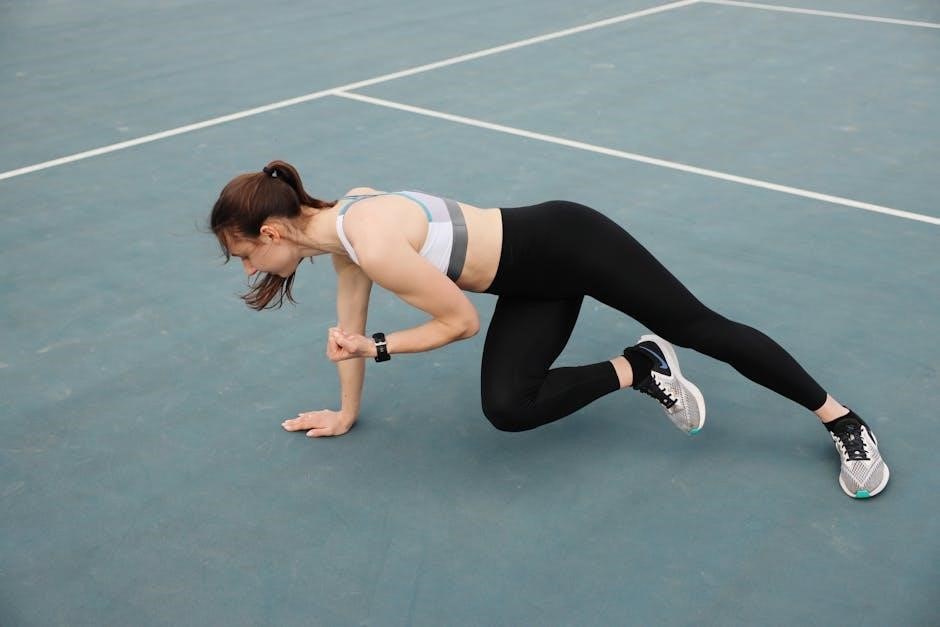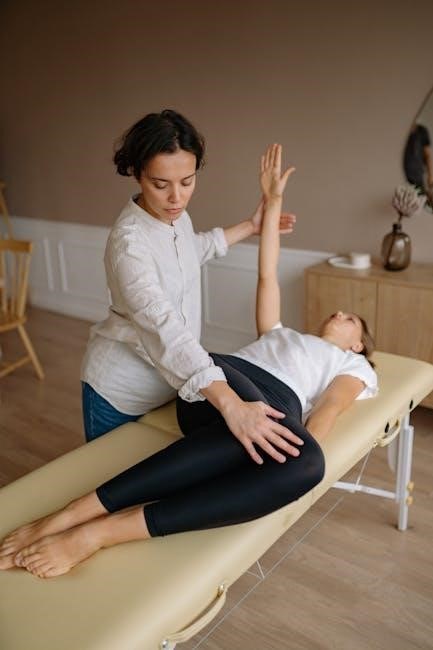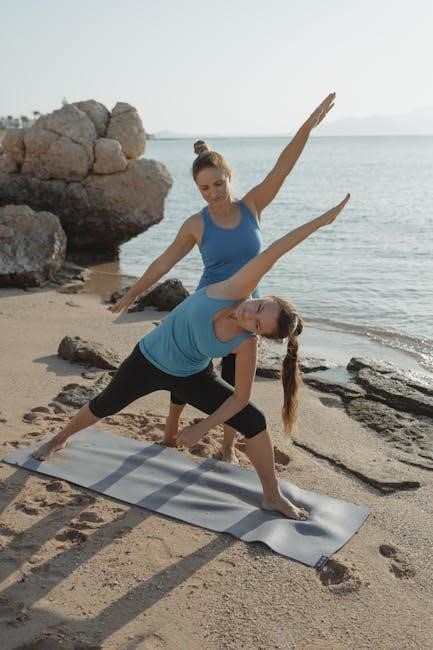
Rotator cuff tendonitis involves inflammation of tendons‚ often from overuse‚ with exercises and physical therapy as treatment options‚ available in a printable rotator cuff exercises PDF for guidance and support always needed.
Definition and Causes
Rotator cuff tendonitis is a condition characterized by inflammation of the rotator cuff tendons‚ which are essential for shoulder movement and stability. The causes of rotator cuff tendonitis can be attributed to various factors‚ including overuse or repetitive strain‚ particularly in activities that involve repeated overhead movements. This can lead to wear and tear on the tendons‚ resulting in inflammation and pain. Additionally‚ poor posture and muscle imbalances can also contribute to the development of rotator cuff tendonitis. It is essential to understand the definition and causes of this condition to effectively manage and treat it‚ and to prevent further injury or complications. A comprehensive treatment plan‚ including exercises and physical therapy‚ can help alleviate symptoms and promote healing. By addressing the underlying causes and implementing a tailored treatment approach‚ individuals can reduce their risk of developing rotator cuff tendonitis and improve their overall shoulder health. Regular exercise and stretching can also help prevent this condition.

Understanding the Rotator Cuff
The rotator cuff comprises four key muscles and their associated tendons‚ playing a crucial role in shoulder movement and stability with proper function and anatomy always.
Anatomy and Function
The rotator cuff is a complex structure consisting of four muscles and their corresponding tendons‚ which work together to provide stability and mobility to the shoulder joint. The muscles include the supraspinatus‚ infraspinatus‚ teres minor‚ and subscapularis‚ each with a specific function and role in shoulder movement. The tendons of these muscles attach to the humerus‚ forming a cuff-like structure that surrounds the joint‚ allowing for a wide range of motions‚ including flexion‚ extension‚ and rotation. The anatomy of the rotator cuff is crucial in understanding its function and the importance of proper rehabilitation exercises‚ such as those found in a rotator cuff exercises PDF‚ to maintain or restore optimal shoulder function and prevent further injury or strain. Understanding the anatomy and function of the rotator cuff is essential for developing effective treatment and rehabilitation plans‚ including exercises and physical therapy‚ to address rotator cuff tendonitis and other related conditions.

Rehabilitation Exercises
Exercises for rehabilitation include stretching and strengthening‚ with a focus on proper technique and gradual progression‚ available in a rotator cuff exercises PDF for guidance always.
Examples of Typical Exercises
Typical exercises for rehabilitation include rotator cuff and scapular strengthening‚ as well as correction of postural imbalances. These exercises can be found in a printable rotator cuff exercises PDF‚ which provides a useful guide for patients. The exercises are designed to be started slowly‚ with a gradual increase in intensity and frequency. It is essential to ease off the exercise if pain occurs‚ and to follow the guidance of a doctor or physical therapist. The exercises may include stretching and strengthening exercises‚ such as shoulder rolls and shoulder blade squeezes. These exercises can help to improve range of motion‚ reduce pain and inflammation‚ and promote healing. By following the exercises outlined in the rotator cuff exercises PDF‚ patients can take an active role in their rehabilitation and recovery. Regular exercise can help to prevent further injury and promote long-term health and well-being. Exercise is a crucial part of the rehabilitation process.

Performing the Exercises
Exercises should be performed with shoulder rolled back and down‚ avoiding pain‚ with a physical therapist guiding the process for optimal results always.
Hints and Precautions
When performing exercises‚ it is essential to keep the shoulder rolled back and down to avoid exacerbating the condition. Individuals should also avoid any exercises that cause pain or increased symptoms‚ as this can lead to further injury. Additionally‚ strengthening exercises should be performed on alternating days to allow for adequate rest and recovery time. A physical therapist can provide guidance on proper technique and help individuals develop a personalized exercise program. It is also crucial to listen to the body and stop exercising if pain occurs‚ as ignoring pain can lead to prolonged recovery time. By following these hints and precautions‚ individuals can ensure a safe and effective rehabilitation process. Furthermore‚ a rotator cuff exercises PDF can serve as a valuable resource‚ providing a comprehensive guide to exercises and stretches that can help alleviate symptoms and promote healing. Regular communication with a healthcare professional is also vital to monitor progress and make any necessary adjustments to the exercise program.

Specific Exercises
Isometric shoulder external rotation and other exercises are included in the rotator cuff exercises PDF for guidance and support always needed for rehabilitation and treatment of tendonitis effectively.
Isometric Shoulder External Rotation
The isometric shoulder external rotation exercise is a key component of the rotator cuff exercises PDF‚ designed to help strengthen the muscles and tendons in the shoulder joint‚ promoting healing and reducing pain.
To perform this exercise‚ stand in a doorway with your elbow bent at a 90-degree angle and the back of your wrist pressing against the door frame.
Then‚ try to press your hand outward into the door frame‚ holding for 5 seconds and repeating for 3 sets of 10 repetitions.
This exercise is essential for rehabilitation and treatment of rotator cuff tendonitis‚ as it helps to improve shoulder mobility and strength without putting excessive strain on the affected tendons.
By incorporating the isometric shoulder external rotation exercise into your daily routine‚ you can help to accelerate the healing process and reduce the risk of further injury or complications.
Regular practice of this exercise can also help to improve overall shoulder function and reduce pain and discomfort associated with rotator cuff tendonitis.